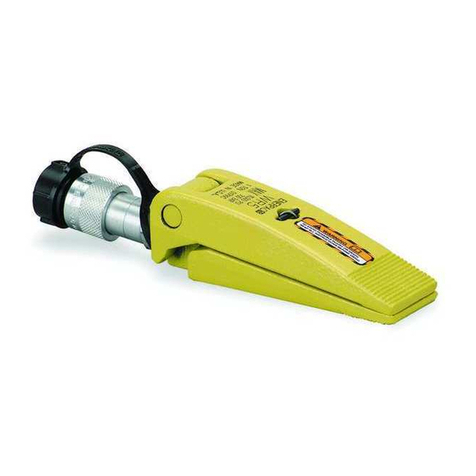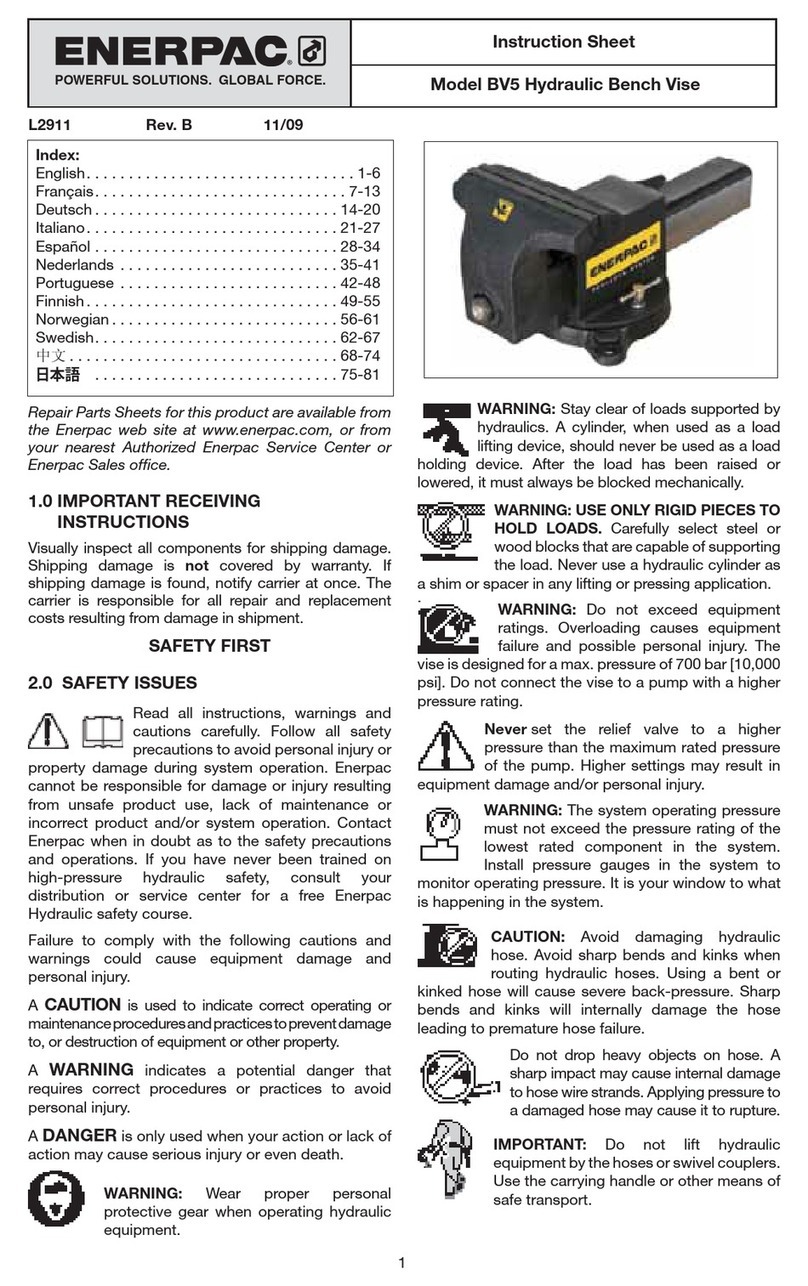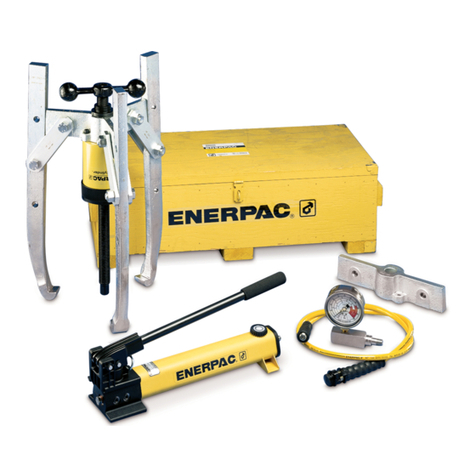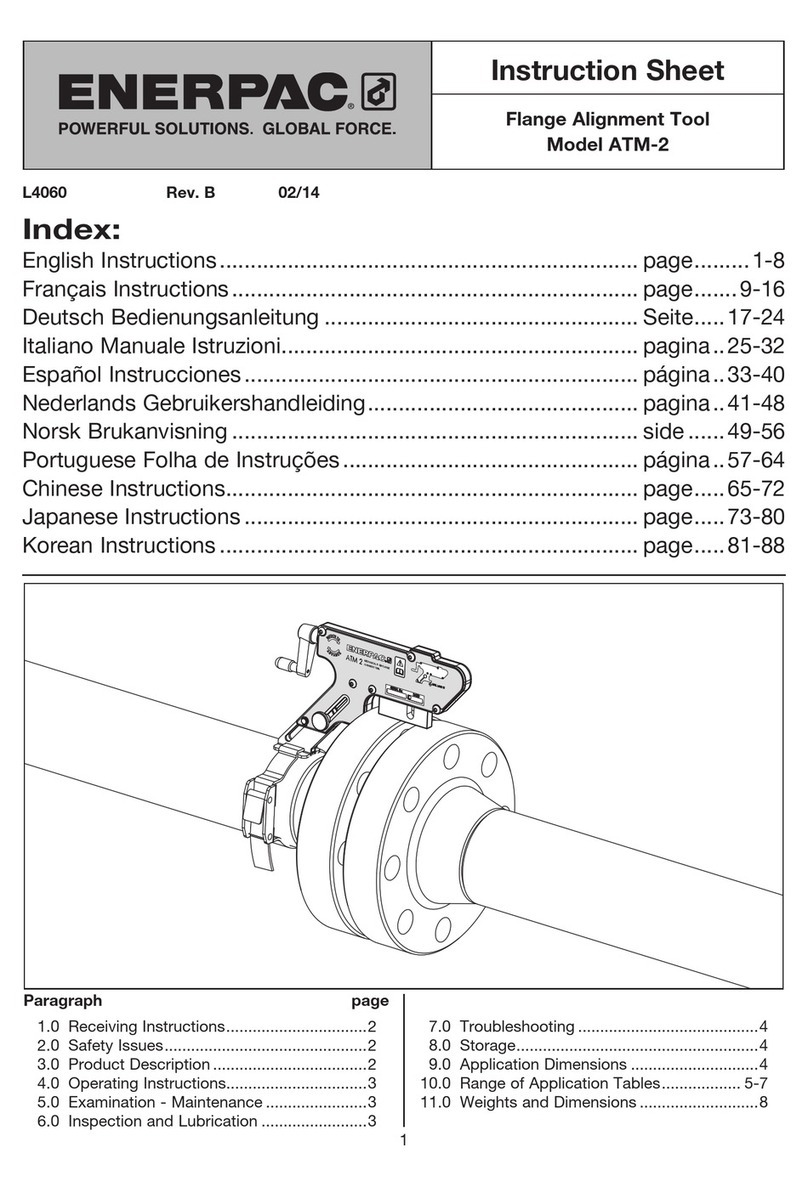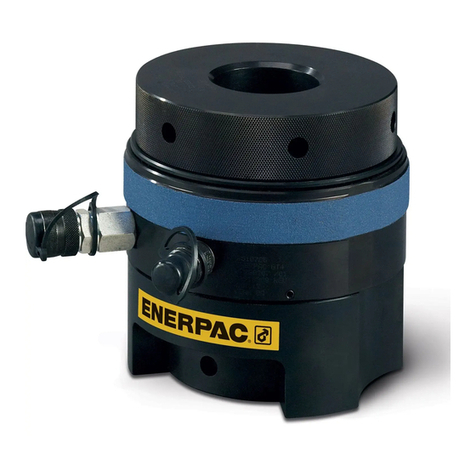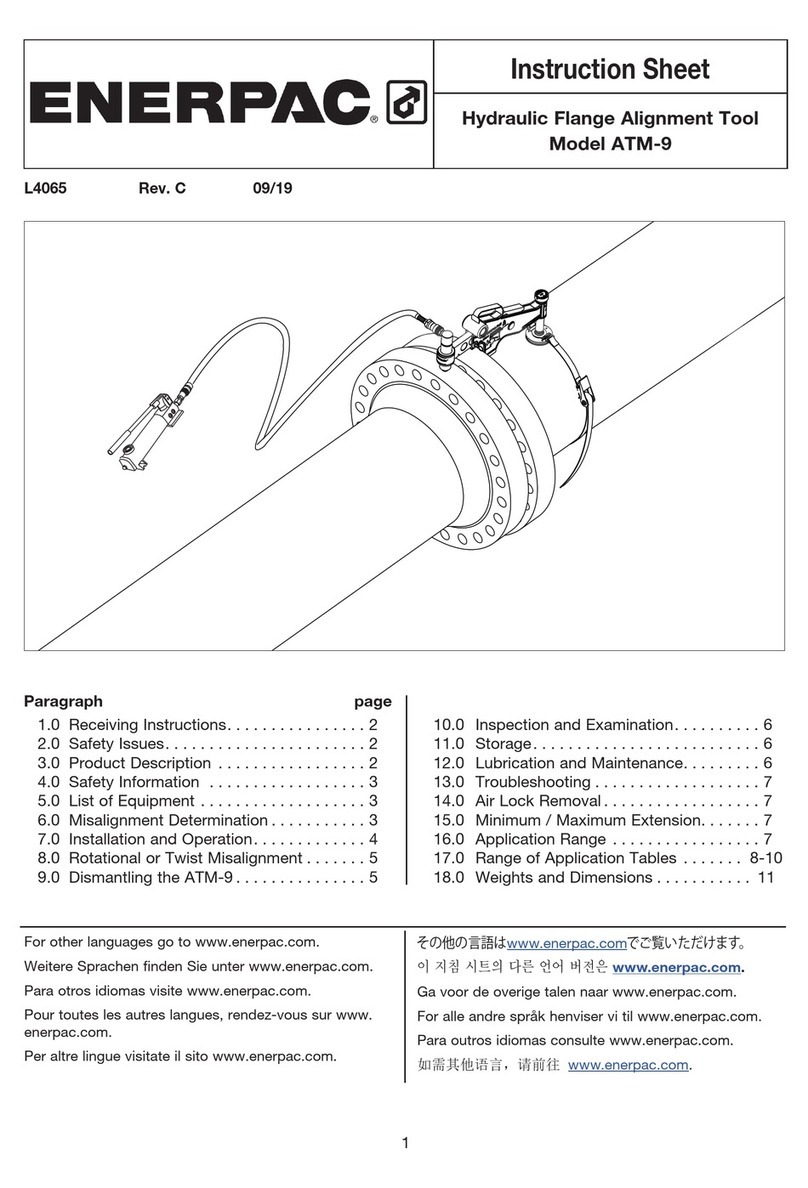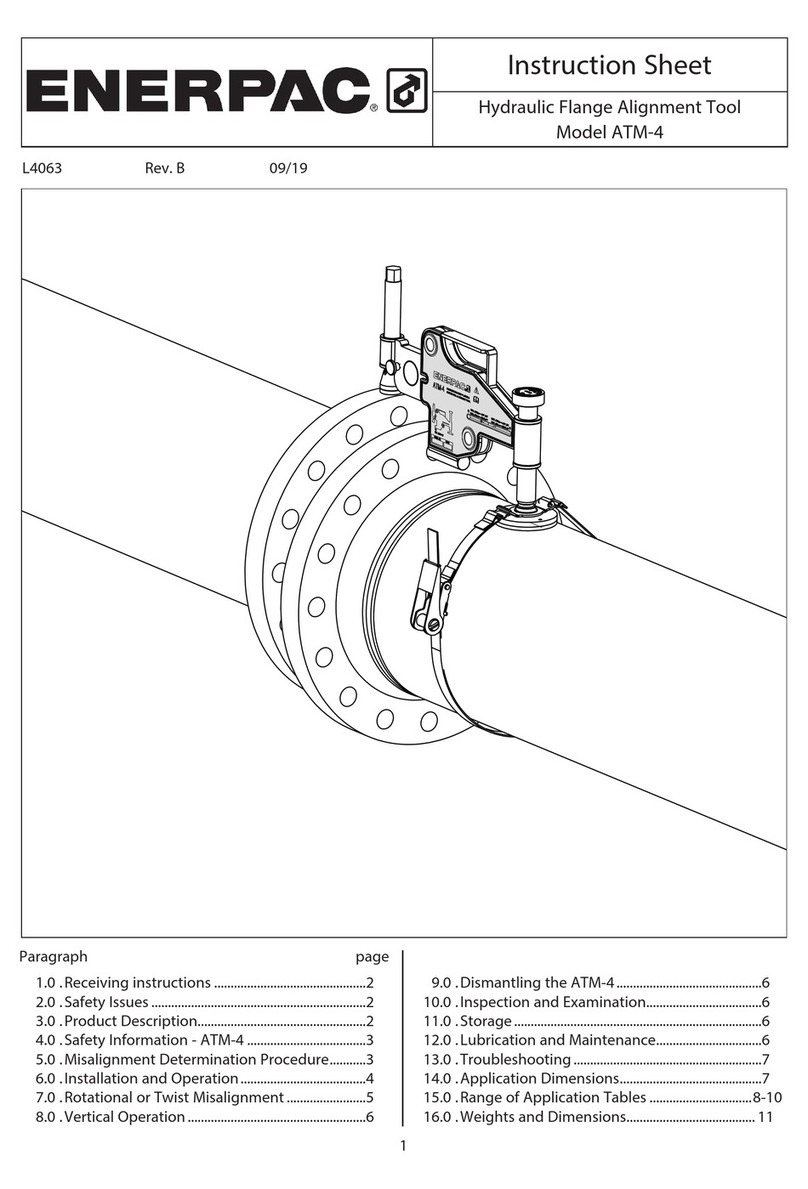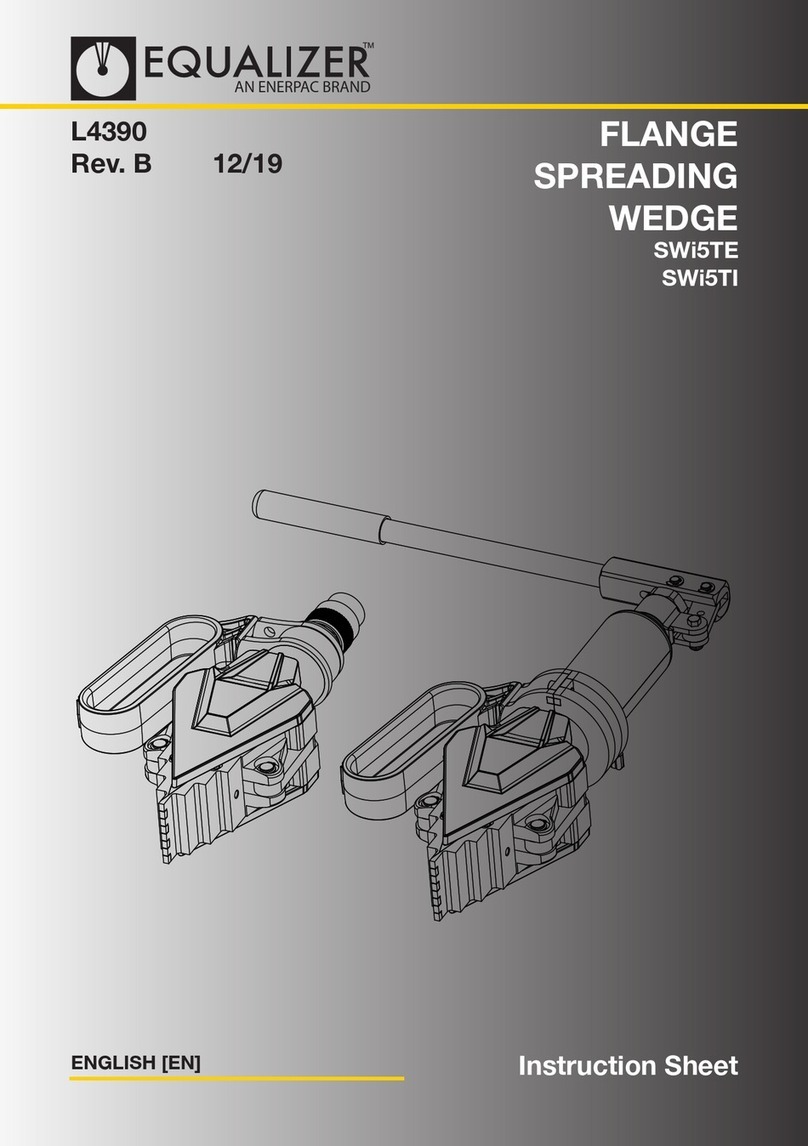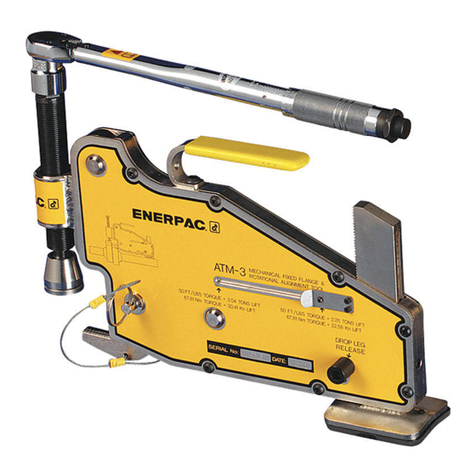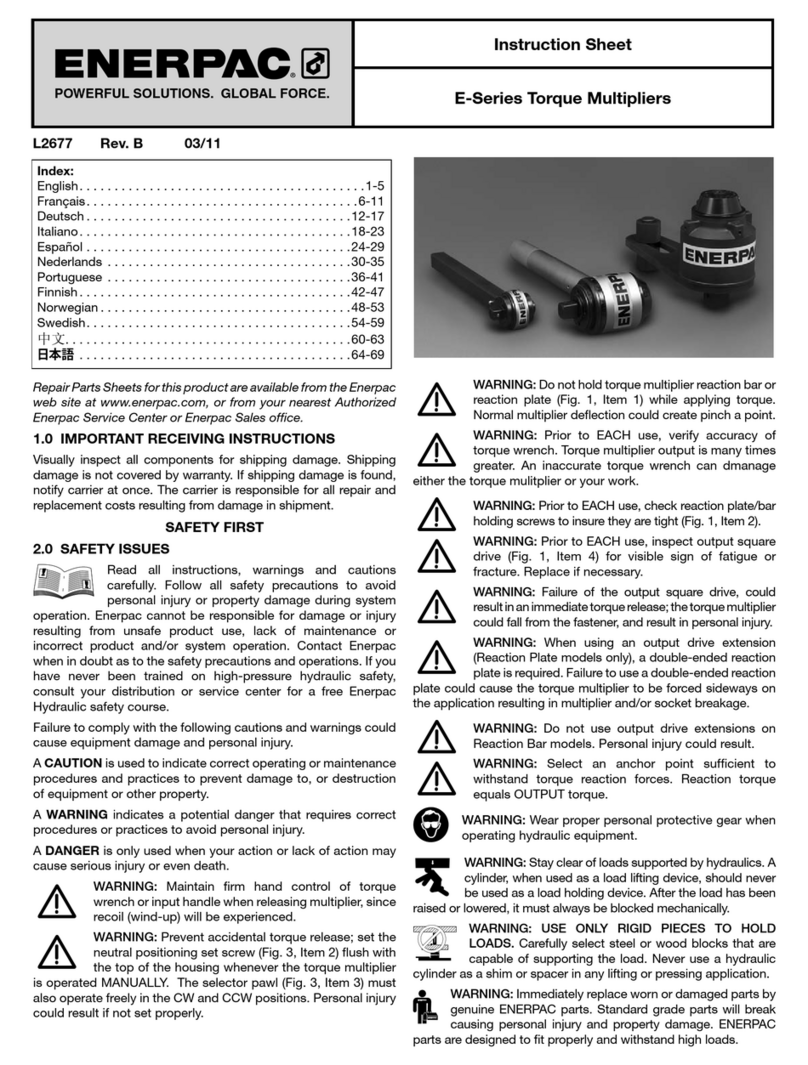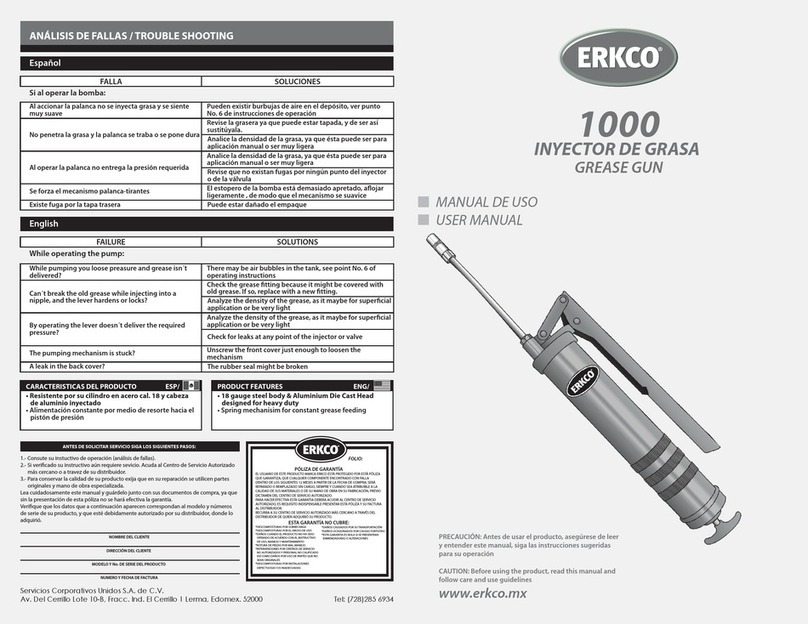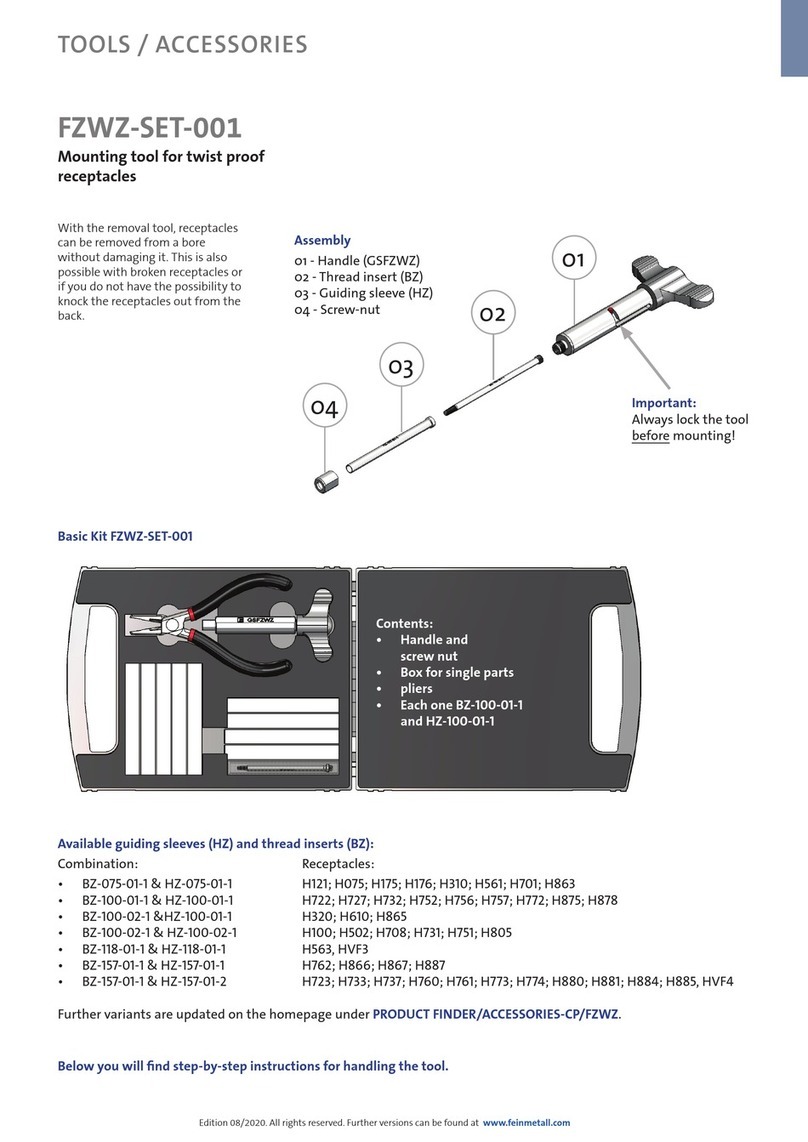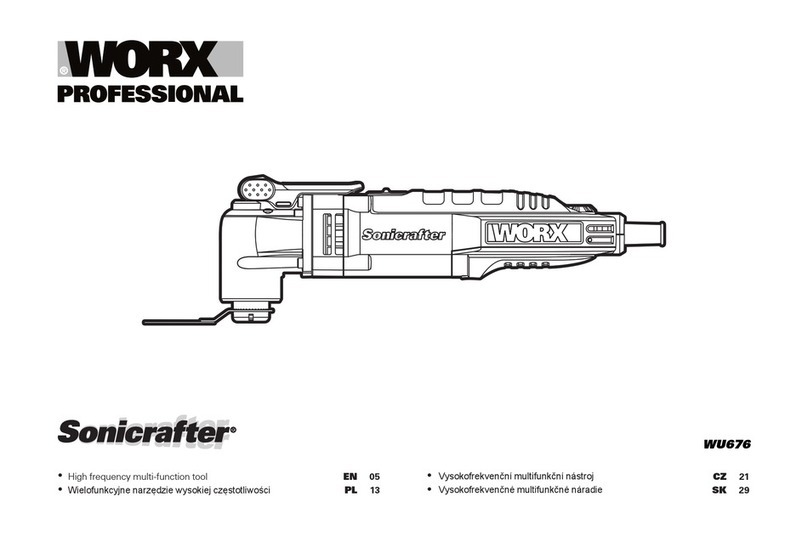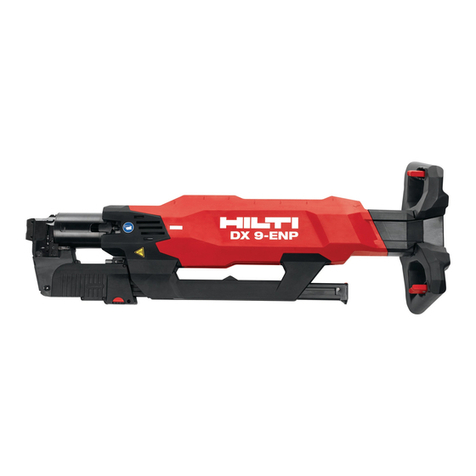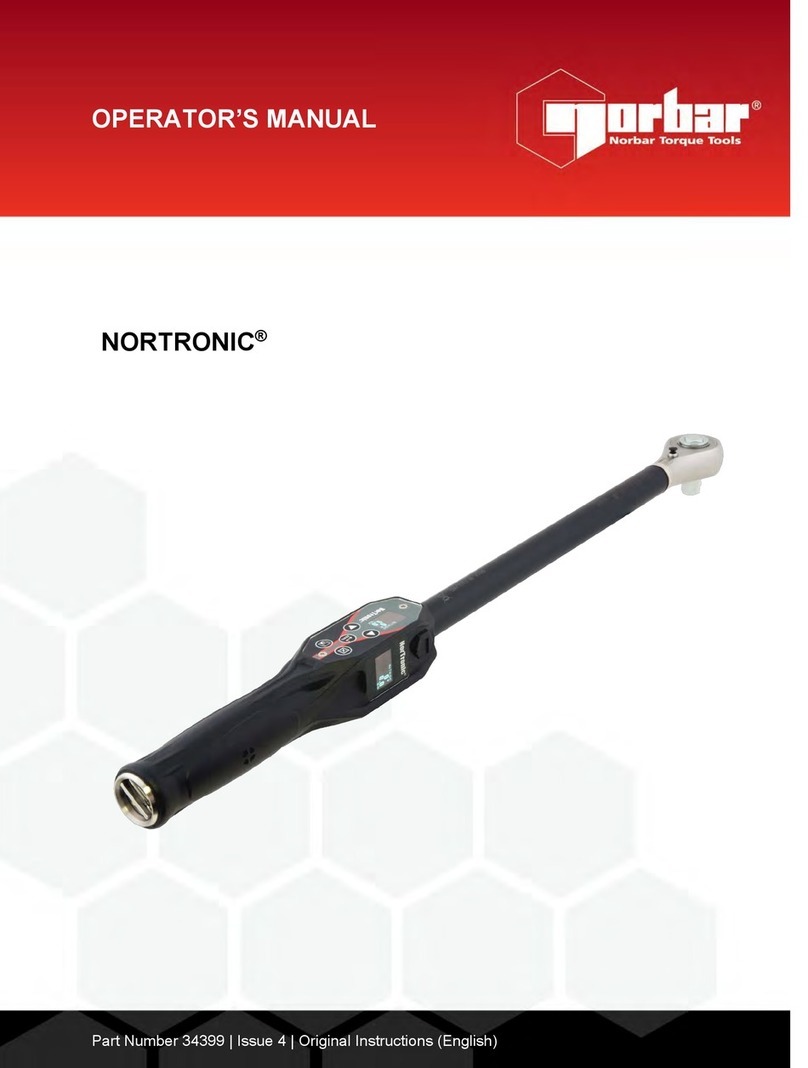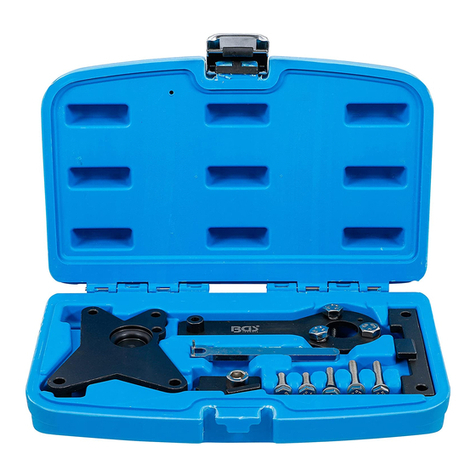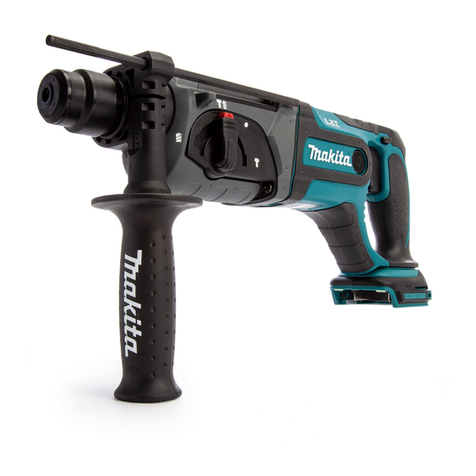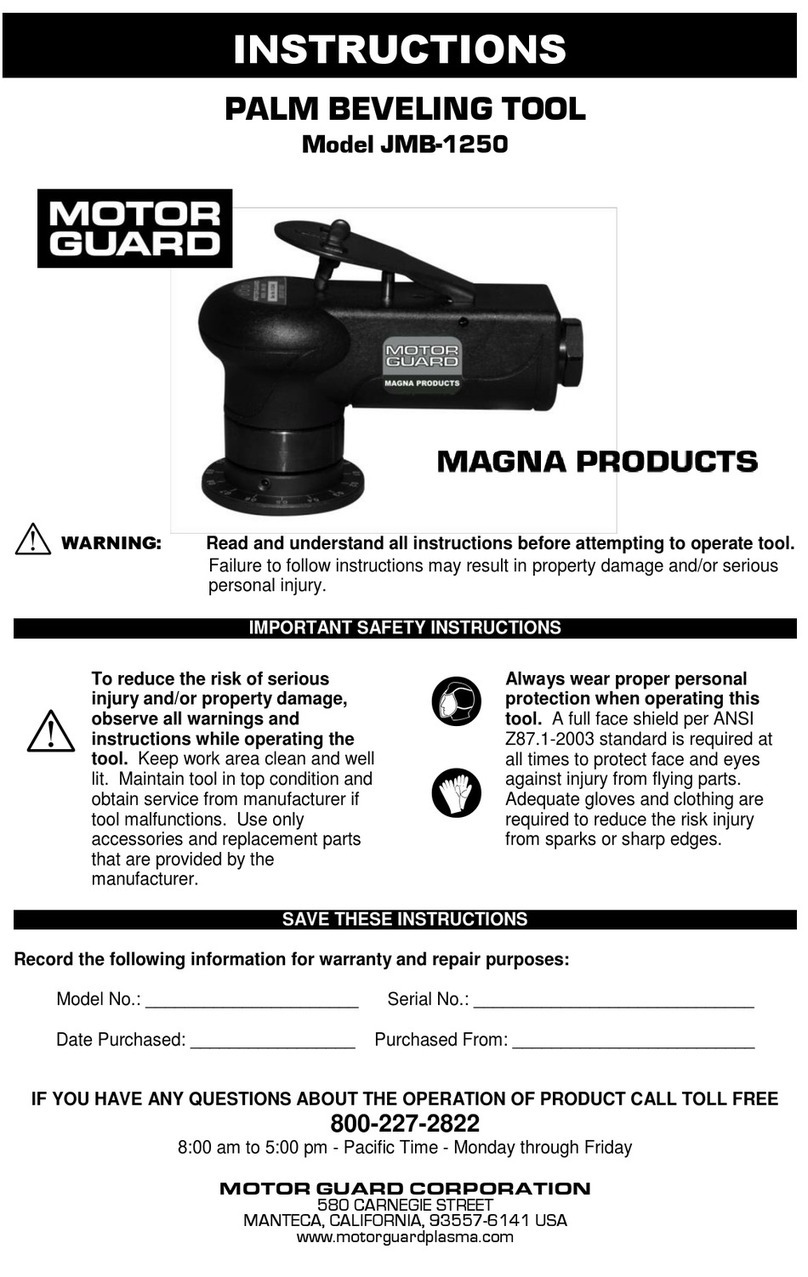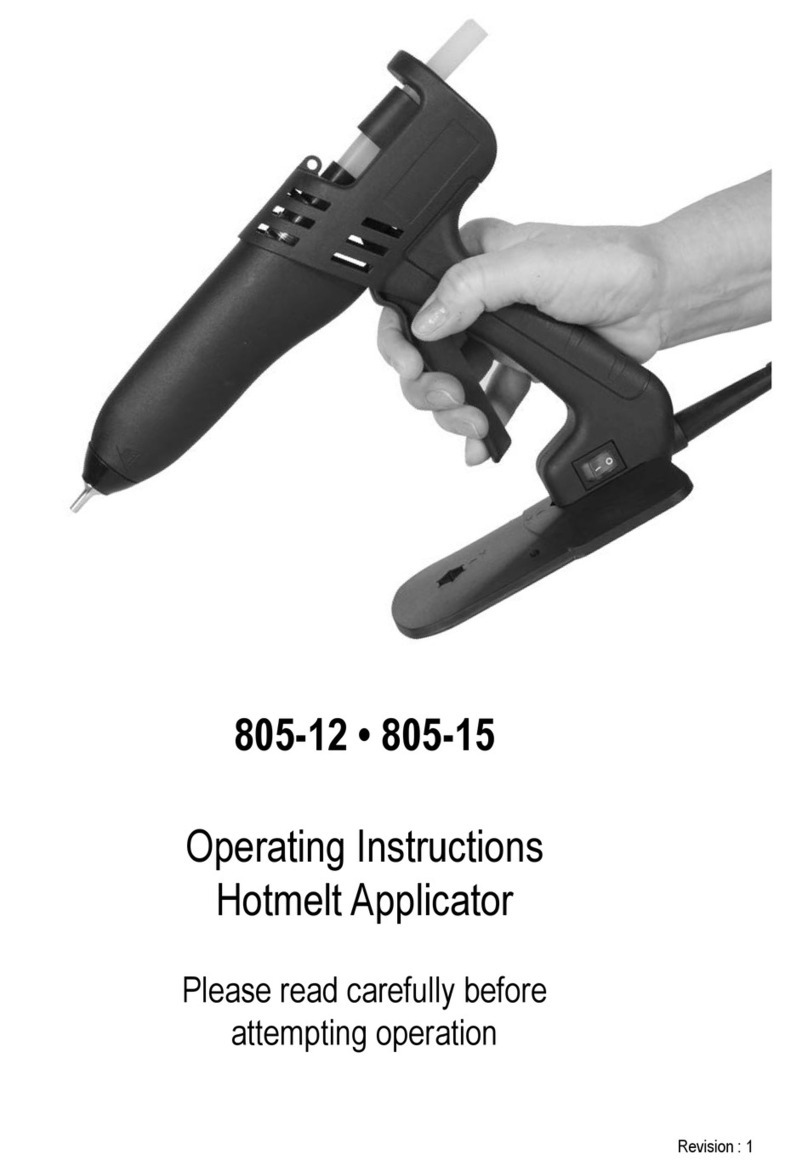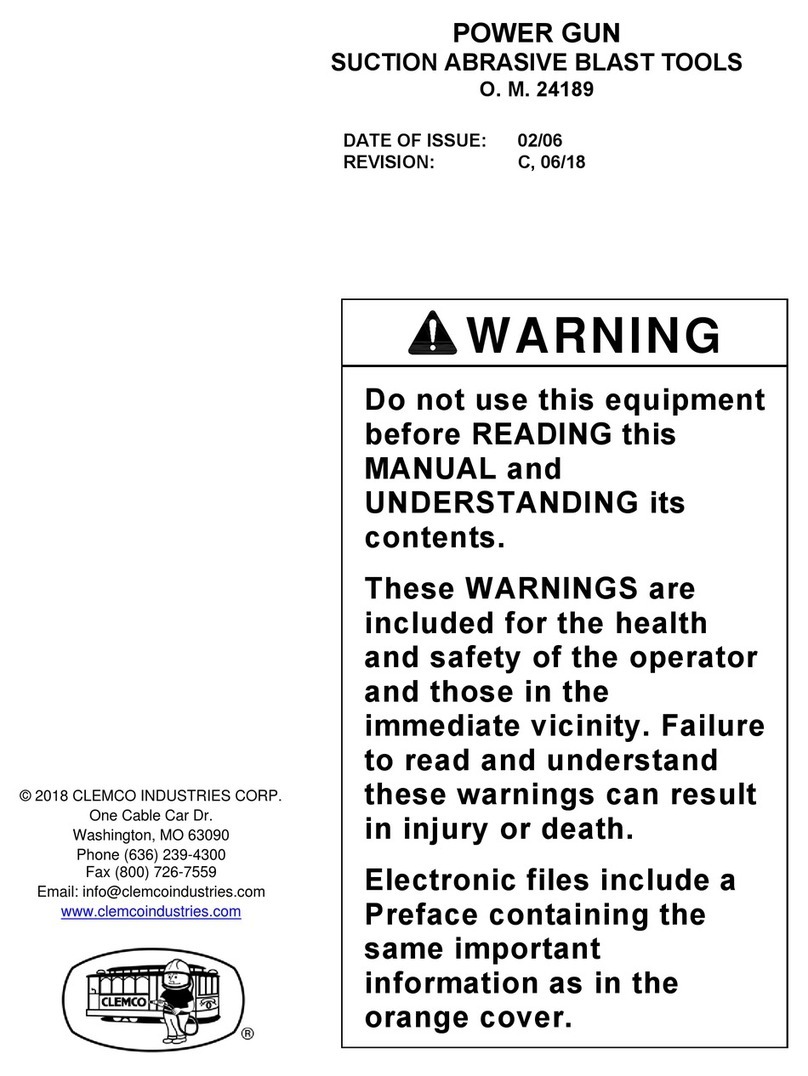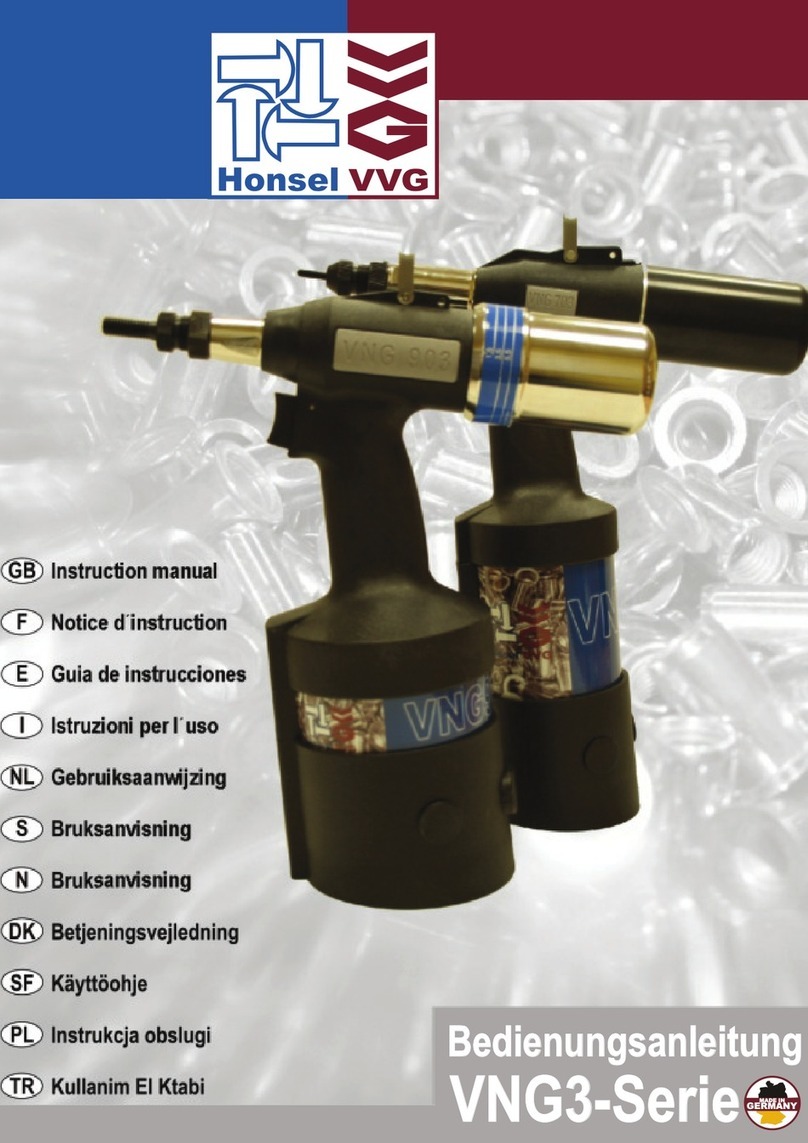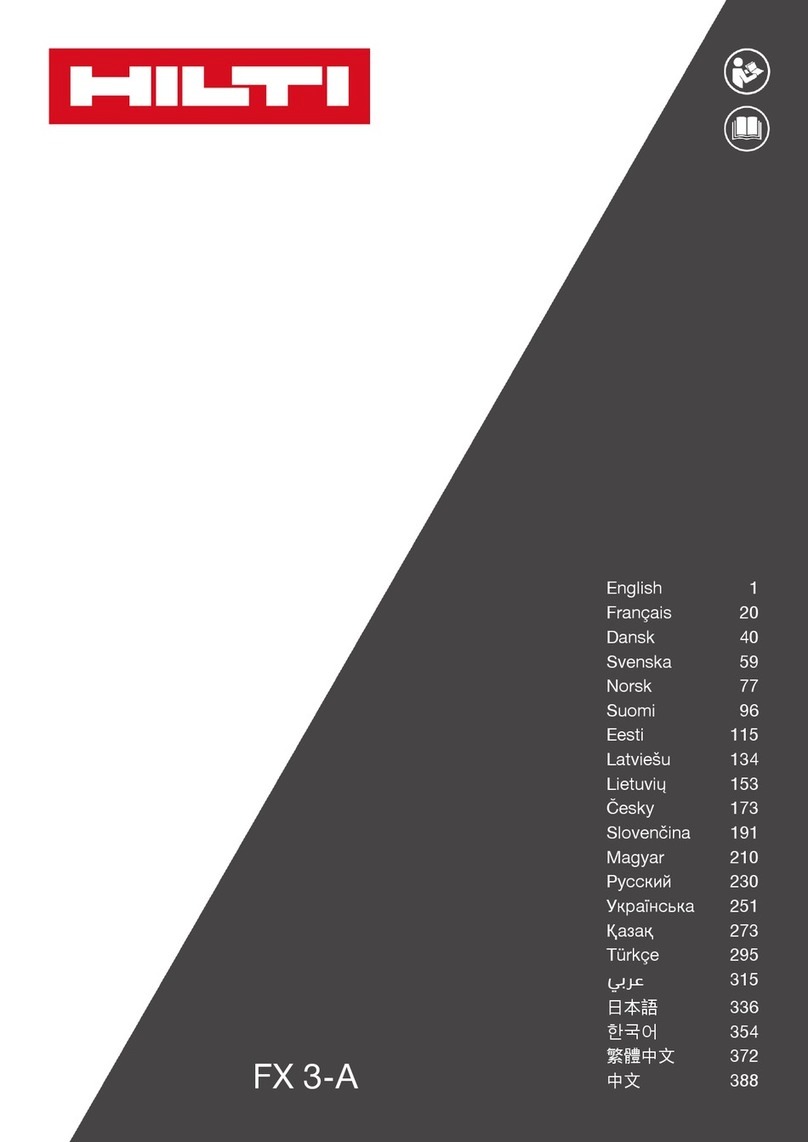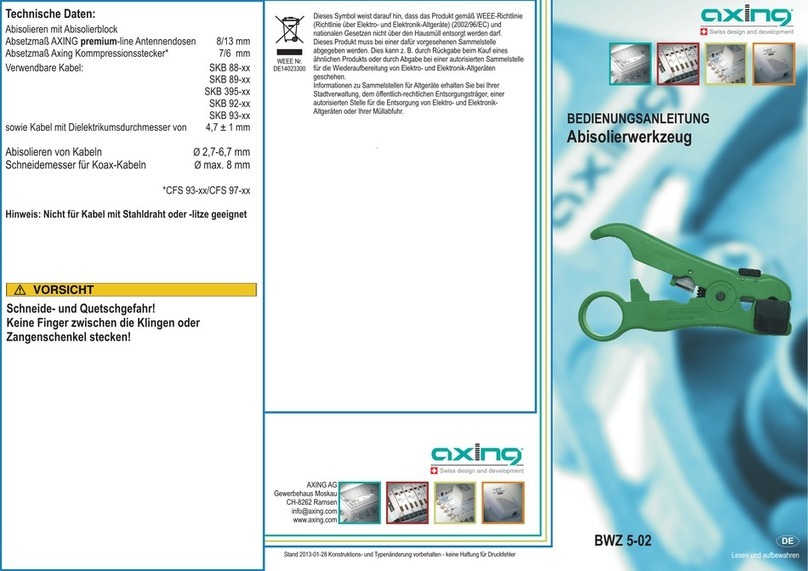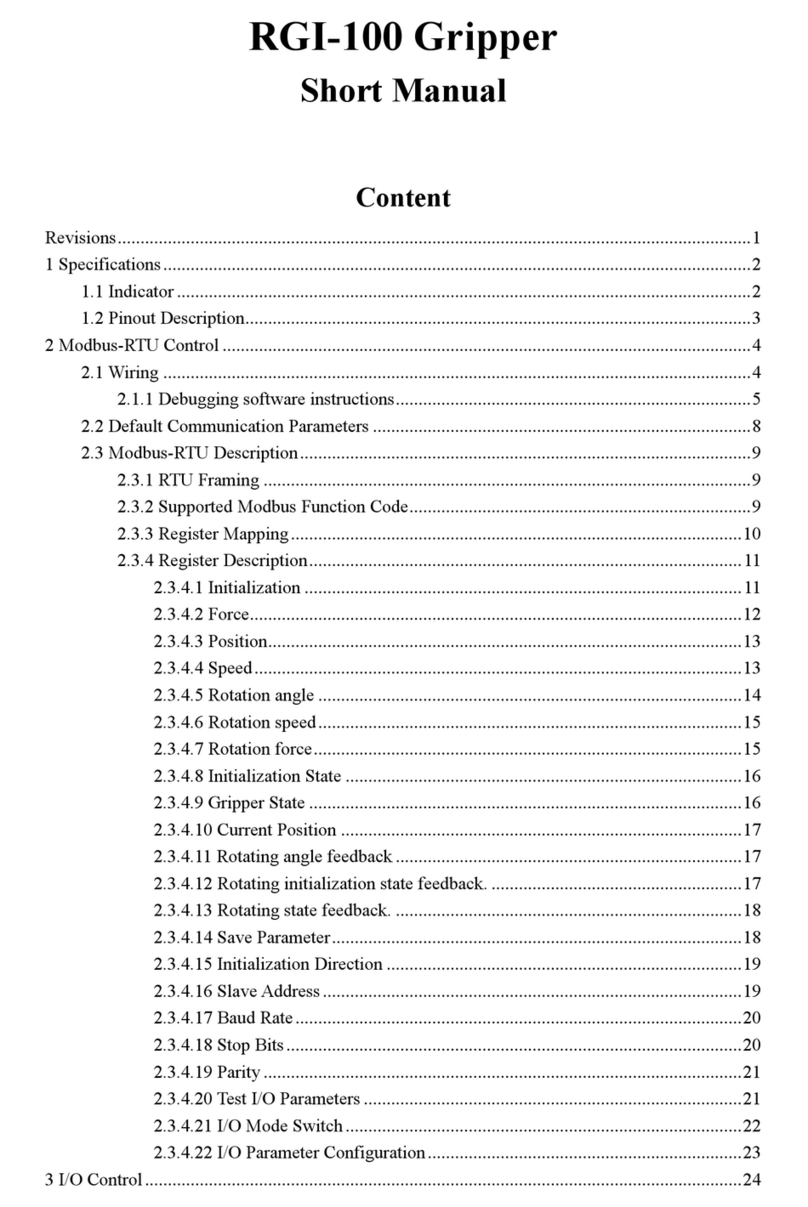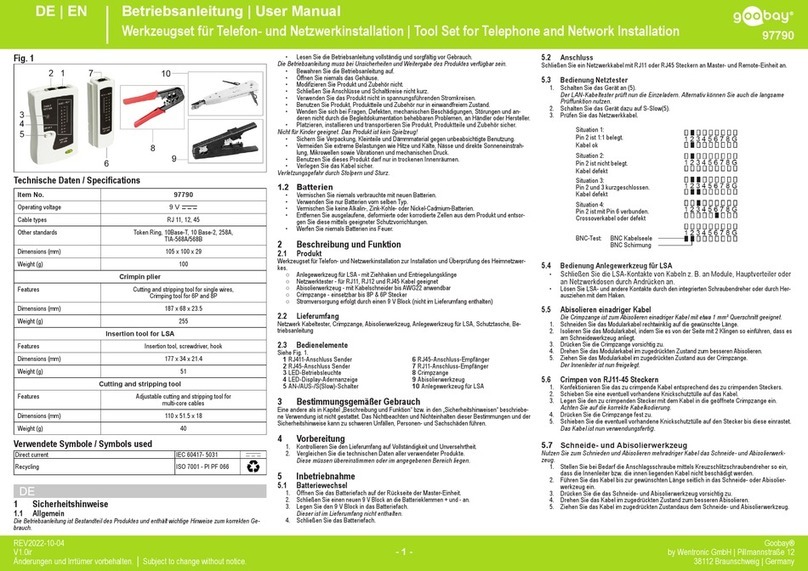
L4554_d 5
1.4 Grounding Instructions
Failure to observe the following instructions and
precautions may result in serious personal injury or death.
• The tool must be properly grounded. In the event
of malfunction or breakdown, grounding provides a
path of least resistance for electric current to reduce
the risk of electric shock. The controller is equipped
with a cord having an equipment grounding
conductor.
• A grounding plug is included with the cord. The plug
must be plugged into an appropriate outlet that is
properly installed and grounded in accordance with
all local codes and ordinances.
• Improper connection of the controller grounding
conductor can result in electric shock.
• If the cord and/or plug are damaged, do not connect
the controller to a live electrical outlet. Repair or
replace the damaged items as required and be
sure the grounding conductor is properly wired
before reconnecting the tool to the outlet. Consult
a qualified electrician if grounding conductor wiring
procedures are not completely understood or if
there is any doubt as to whether the tool is properly
grounded.
• Do not modify the plug provided with the controller.
If the plug will not fit in the outlet, have a proper
outlet installed by a qualified electrician.
• A qualified electrician should be consulted if there
is any doubt as to whether an outlet box is properly
grounded.
• The controller is equipped with an electric power
cord and plug specific to its rated single phase
voltage. No adapter should be used with the plug.
• If the controller must be reconnected for use on a
different type of electric circuit, the reconnection
should be made by a qualified electrician. After the
reconnection, the tool should comply with all local
codes and ordinances.
1.5 Use of Extension Cords
Failure to observe the following instructions and
precautions may result in serious personal injury or death.
• Use the proper size extension cord with the
controller power cord when use of an extension
cord is necessary. A qualified electrician should be
consulted to help specify and select the proper size
extension cord. The marked electrical rating of the
extension cord should be at least as great as the
electrical rating of the tool.
• A long extension cord should be arranged so that it
will not drape over any working area where it can be
tripped over, snagged, or pulled on unintentionally.
• If the tool is to be operated outdoors and an extension
cord is needed, use only an outdoor use extension
cord. An outdoor use extension cord will be clearly
marked with the suffix letter “W” and the statement
“Suitable for Use with Outdoor Appliances”.
1.6 Disconnecting Power
WARNING
Failure to observe and comply with the following
precautions could result in death or serious personal
injury. Property damage could also occur.
• Be sure that controller power is switched off before
disconnecting plug from electrical outlet.
• Do not unplug the controller by pulling on the cord.
To unplug, grasp the plug, not the cord.
• Disconnect plug from electrical outlet when the tool
is not in use and before servicing or cleaning the
tool.
1.7 Pendant Battery Safety
Precautions
Lithium ion batteries may explode or burn due to improper
use.
Failure to observe and comply with the following
precautions could result in death or serious personal
injury. Property damage could also occur.
• Always use the correct batteries for the pendant. Do
not attempt to use a non specified battery. Refer to
Section 3.3 for required battery type.
• Install the batteries in the proper polarity. Observe
(+) and (-) marks.
• Do not attempt to crush, incinerate, short circuit or
disassemble the batteries. Doing so may cause fire,
explosion and burns.
• Always store and transport rechargeable batteries
in a safe, non-conductive container (never keep
a spare battery loose in a pocket, purse, etc. and
always use protective cases).
• Keep batteries and pendant away from flames and heat.
• Do not probe the batteries or pendant with
conductive materials.
• Do not expose the batteries or pendant to wet
conditions or excessive humidity.
• Do not use any rechargeable battery if any visible
damage is present, or if known mishandling,
accidental or otherwise, has occurred
• Do not attempt to repair or modify the batteries.
• Store spare batteries in a cool, dry environment and
in a secured area, away from children and pets.
• Refer to battery manufacturer’s instructions for
complete battery safety information.

